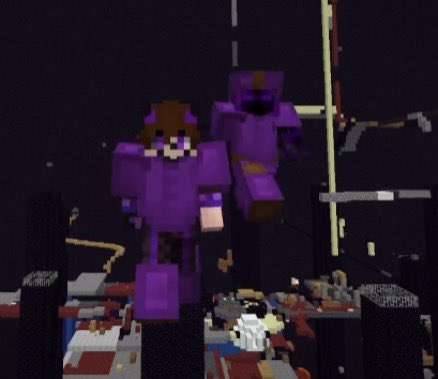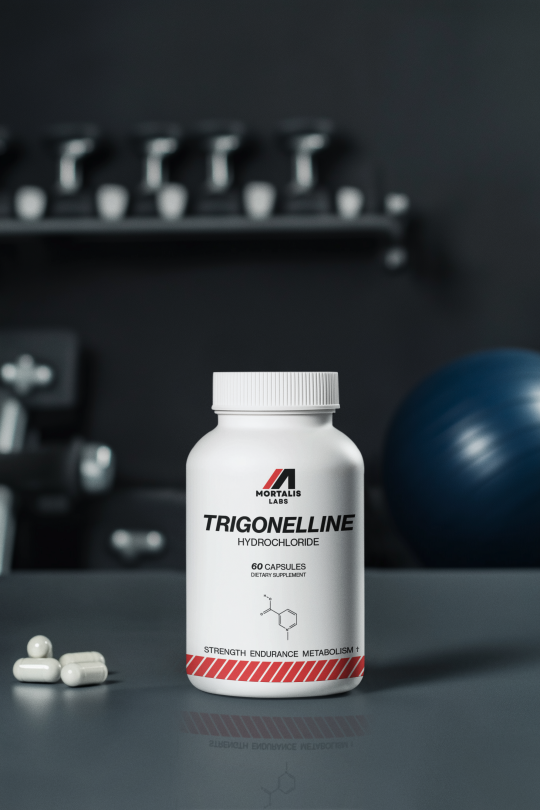#unidentified source
Explore tagged Tumblr posts
Text

4 notes
·
View notes
Text


Sayo Yasuda from Umineko When They Cry is intersex, and her variation is unidentified!
#requested by anon#intersex#intersex headcanon#unidentified variation#sayo yasuda#umineko#umineko spoilers#umineko when they cry#sayo umineko#hey umineko fans? is this source as batshit insane as it looks?#/lh but looking for images was. Why do they look like that.
59 notes
·
View notes
Text
N: *laughing, mimicking Colress* "Nooo, N! Don't eat the uranium rod!"
Concordia: DID YOU OR DID YOU NOT CONSUME URANIUM.
N: *big, happy smile*
Anthea: I'M CALLING AN AMBULANCE.
N: It was tasty.
Anthea and Concordia: NO.
#incorrect pokemon quotes#N Harmonia#Anthea and Concordia#Anthea Harmonia#Concordia Harmonia#Colress#(Mentioned)#Source: unknown#N has a habit of eating or drinking things he really shouldn't#Nightshade berries? Yup#Scolipede venom? Absolutely#That weird unidentified food item sitting in the back of the fridge? Oh yes#N is basically immune to being poisoned by this point
22 notes
·
View notes
Text
Hayden Panettiere

7K notes
·
View notes
Text
While discussing Lost Archivist Report: Storm Fall with some folks I off-handedly proposed that the Keeper from the West could even be an entirely new Keeper we've never heard about before, and while that was initially supposed to be more of a stab at people trying to definitively state that the Keeper from the West is absolutely Ra or Thorim, I'm actually starting to develop theories around it.
LAR:SF covers an event very early in Azeroth's Titanic era, when Khaz Algar was still Sector AR-938 and under construction by the earthen; prior to Dornic and Galan, as Dornogal is still being referred to as Site 0 in contemporaneous records (Observational Notes: Ramolith, pg. 5, the Dueling Ramoliths.) During this event the rooks are attacking the earthen and Archaedas calls for aid from an unidentified Keeper, who comes from the West.
This Keeper is not definitively identified anywhere, but is heavily associated with storms and is described as being cloaked in thunder. Some people believe it is Ra-Den, others Thorim; previously, I've been in Camp Thorim due to this figure's immediate response to seeing cool lightning beasts being "We have GOT to make those ours." Ra-Den is not without his own arguments, such as proximity and also being associated with storms.
But the more I think, the more I wonder. This Keeper arrived from the West. While the Keepers were probably still moving around some as the Ordering of Azeroth was an ongoing process, it's sort of indicated they entrenched in their respective areas pretty early on during the Ordering and left only as needed. Thorim, then, would have likely been in the North; and while it is a little difficult to pin down where Sector AR-938 would have precisely been on the pre-Sundering map, Pandaria is unambiguously to the East of it and, frankly, even being generous, the best I can do for Uldum is North-West.
So, a little bit on the West.
In the earliest days of the dragonflights the Tragedy of Erinethria unfolded when Erinethria decided to fly across the Storming Sea and see from whence the West wind blew, despite the warnings of Tyr. This event would have been approximately 21k years ago, with about two centuries of permitted wiggle room.
There's also the rather curious Wreckage Analysis Report, found among Tyr's archives in Uldaman, which indicates that somewhere beyond Kalimdor is a landmass known as Avaloren, where heretics against the Titans reside. They did something (probably murder...) to a previously unknown Keeper named Innaria—which sets the stage for there to be even more Keepers we have not previously known about—and have successfully hidden away on Avaloren since. We don't know when this occurred, but it had to have been prior to Tyr's demise (about 20.5k years ago, give or take a century or two) since the report was among his belongings.
A final piece of interest to me is that in the final entry of Archaedas' personal records that we recover for the Archives, he wonders if perhaps the Worldsoul's influence was affecting the Keepers as well as the earthen (some of who had themselves gone rogue against the Titans as a result of the Worldsoul's influence), albeit out of his own uncertainty in his own behavior and actions. We can't strictly date when this happened, but it seems it would be after Storm Fall (due to the Storm Fall report existing only because the Archives were not complete yet; meaning that Archaedas probably would not have been recording discs for the Archive that didn't yet exist) but prior to Tyr's death and Archaedas ensconcing himself in Uldaman.
So I wonder...
The fact that the heretics upon Avaloren warranted such a strong response from the Prime Designate, and that they were seemingly capable of killing, deactivating, or imprisoning Keeper Innaria to stop her from being around in the present day, if perhaps they were led by another Keeper who had himself gone rogue from the Titans' designs due to the influence of the Worldsoul and, one might hope, the weight of what he did to those poor birds.
#this is making progressively less sense because it is taking too long to write because i am double checking my sources to make sure that i#am not talking out my ass. which i mean. i might be. but it's citable talking out my ass. it's talking out my ass i can back up.#there's something Fucking Weird going on to the West and a mysterious unidentified keeper whose primary identification is#Came From the West#is standing out really hard all of a sudden
6 notes
·
View notes
Text

13 notes
·
View notes
Text

This is kind of a random post, but I saw this randomly and it genuinely shocked me
I've been playing CRK for nearly 4 years (since at least September 2021) and never has it been *this* popular. It got a bit of traction some years ago but--at least from a Kingdom perspective, I've never and have never played Ovenbreak--fell back into niche obscurity. I've casually been aware of it for years but I would never ever see anything about it normally unless I went and looked for it myself. But now whenever I see one of those mass chain mutual tagging posts about fictional characters ("put 5 of your favorite characters ever here and tag a friend to keep it going"), I see that blue clowns face, when I would never see Cookie Run characters in those chain posts before then (but tbf I didn't see or look at them often anyway). Isn't it crazy how the addition of literally one character can make an overall unpopular game (*at least* in English-speaking spaces of course, HEAVY emphasis on this, I'm sure it's way more popular elsewhere) explode so suddenly
#v.txt#Not meant to be a gatekeeping post where I'm saying “ugh these posers don't even care about this game they only like one character”#Not at all#I'm just amazed that people worldwide are literally going into mass hysteria over this Jevil recolor#I think it's also massively helped by the fact him and PV are so shippable#And ships are what give fans fuel#I could be entirely wrong about this as well I mean of course I would never see it cuz I never interacted with the fandom#But this is just how it felt to me#Um anyway hello CRK fans of Tumblr... what's going on....???#Whenever I officially interact with a fandom on here for the first time even if I'm familiar with the source material#I feel like I'm on stage in front of hundreds of people all staring at me with unidentifiable expressions#Cookie Run#Cookie Run Kingdom
3 notes
·
View notes
Text


Michel Bollinger from The House in Fata Morgana is canonically an intersex trans man! While he has no named variation, he was raised as a girl despite having profound gender dysphoria, and went through a masculinizing puberty "except for the lower limb".
#requested by anon#intersex#intersex character#unidentified variation#unidentified masculinizing variation#trans character#trans#transgender#transmasc#transmasculine#trans man#ftm#queer characters#michel bollinger#the house in fata morgana#niche characters#? i guess#I feel like I recognize this source but finding information was sort of scarce. so making a guess
35 notes
·
View notes
Text
Zión Moreno
3K notes
·
View notes
Text

Earthworm.jpg
#wikimedia commons#2000s#2007#Unidentified Haplotaxida#Detritivores#Taken with Canon EOS 20D#Taken with Sigma 150mm F2.8 EX DG APO Macro HSM#License migration opt-out#GFDL-1.2#CC-BY-NC-3.0#Files with coordinates missing SDC location of creation#Media missing infobox template#Files with no machine-readable author#Files with no machine-readable source
1 note
·
View note
Text
For someone who claims to love irony, Ethan has a very strong flinch response when it comes to cringe. -⚔️
dude shut up this is cringe as hell we both know it -💿
1 note
·
View note
Text
boobs rule when theyre not attached to my body
#personal#i wouldnt mind them if they werent an additional source of Anomalous Unidentifiable Chest Pain
1 note
·
View note
Text
Pit Droid Laughter

STAR WARS EPISODE I: The Phantom Menace 00:33:28
#Star Wars#Episode I#The Phantom Menace#Tatooine#Xelric Draw#Mos Espa#Watto's Junkshop#unidentified GNK power droid#unidentified pit droid#unidentified droid#ionizer#monocular photoreceptor#droid intercommunication antenna#telescopic neck#high-output power source#high-torque motors#Jar Jar Binks
0 notes
Text
On the morning of August 19th 1966, the merchant marine vessel Pelican unloaded its cargo into the port of Los Angeles. Recently declassified information about the Pelican’s ship manifest confirms that the ship was carrying experimental materials for a nascent project Clover. Of the 425 drums of material, only 424 were accounted for.
While government officials have not confirmed exactly what was in the lost barrel, its contents are believed to be approximately 55 gallons of an experimental substance similar to LSD.
To anyone with a passing interest in the 1970’s music scene, this will not come as news. Tall tales of a lost ship full of experimental drugs were as common as disco, though the stories have been exaggerated. The most common form of the story features a drunk crane operator loading a shipping crate onto the wrong train, though in reality it was only a single barrel that went unaccounted for. The more outlandish forms of the legend include everything from a daring heist by a crew of rocker-pirates to shadowy government entities vanishing the entire ship for their own nefarious purposes.
The reality was a simple logistical mixup, a mistake that can be tracked back to a simple addition error on an inventory sheet, an ordinary yet deeply embarrassing mistake on part of the government. Additionally, The information that revealed the lost barrel came alongside a report detailing project clovers lost asset tracking protocol. Protocol that reads as comically naive in hindsight, with guidelines including “monitoring local jazz bars” or keeping an eye out for “feminist thought.” With the benefit of retrospective, it is no surprise that agents were not able to track the barrel.
Declassification of the Pelican’s manifest prompted an unexpected crossover with another niche legend of the 1970s Los Angeles music scene: the disappearance of the Knights of Altonia.
Even today, many consider the Knights of Altonia to be a myth, but scant references to their existence can be found. According to a review from a 1977 issue of Jam! Magazine, the Knights of Altonia were a “D-List psychedelic glam metal outfit with more style than skill, known more for their disappearance than their music.” Though a 1997 retrospective from Tempo calls them “A band too ahead of their time to be properly appreciated” noting their flamboyant stage costuming and its significant influence on the aesthetics of the genre.
To the frustration of music historians seeking to separate fact from fiction, the band featured an elaborate mythology, with each member claiming to be a “Wizard-Knight of the Mystic Tower” who traveled from their world to ours “on a journey through the Nine Realms to find the secret stone.” This has been the source of innumerable urban legends around the band. A common joke among hobbyist historians at the time claimed that the Knights did not vanish, but simply “returned to the Nine Realms.” Information on the band is so muddled that many music historians doubt their existence entirely. In fact, the only confirmed, physical evidence of the band’s existence is a photograph at the bottom of the Jam! Review, it features:
Lead singer and guitarist Donald Hawkins as his stage persona “Zozimos the Wise.” He sports a mane of dreadlocks, and a classic blue wizard hat and robe decorated with yellow stars.The robe is worn open to reveal Donald’s bare chest, along with velvet short-shorts and a pair of thigh-high leather boots. The article states that the glittery bright purple guitar in his hands was named “Excelsior.”
Rhythm guitarist Jon Todachine as “Wan the Witch King.” He wears a deerskin jacket, also open at the front, decorated with what appear to be crow feathers and small animal bones. The theme of bones continues to his belt buckle, which features an as-of-yet unidentified animal skull. This figure is presumed to be Jon, although it should be noted that the broad hat he wears features a curtain of beads that obscures his face.
Bassist Riley Knox as “Chulainn the Horned.” He wears a full deer skull, along with a lit candle that appears to be slowly melting down over the mask. Most of his upper body is obscured by what appears to be a cloak of leaves. Beneath the cloak he appears to be wearing a pair of Nike Blazers.
Drummer Marcus Wilson as “Magnus Fire-Weaver.” He wears a viking helmet over intricately braided red hair, a chain-maille loincloth, a pair of medieval bracers on his wrists, and nothing else.
Most notably, a speaker on stage left is placed upon a large steel drum identical to the ones used by project clover.
Study is ongoing.
2K notes
·
View notes
Text


Trigonelline is a methylated form of niacin and is a recently isolated molecule that could be the secret ingredient in your stack. This form of the B vitamin is involved in the generation of NAD+, a cofactor for over 500 metabolic processes in cells. Trigonelline promotes cellular repair and energy, and as we’ll see, exerts quite a few benefits that are specifically useful for anyone training seriously.
Trigonelline is found in several plant-based foods, notably coffee beans and fenugreek seeds. Green coffee beans contain trigonelline concentrations ranging from 0.6% to 1.0% by weight. However, traditional dietary sources don’t provide sufficient amounts to elicit significant physiological effects. For instance, the average trigonelline content in a cup of coffee is approximately 53 mg, and about 50-80% of trigonelline decomposes during the roasting process, leaving virtually nothing for your body to make use of.
Recent research published on this naturally occurring alkaloid highlights its potential in enhancing muscle function and combating age-related decline. A 2024 study published in Nature Metabolism identified trigonelline as a novel precursor to nicotinamide adenine dinucleotide (NAD+), a molecule essential for energy metabolism and mitochondrial function. The study demonstrated that trigonelline supplementation improved muscle strength and reduced fatigue in aged mice, suggesting that it can head off the natural muscle decline seen in aging, even in those who are already training at capacity.
NAD+ gets discussed a lot in the longevity space because of its natural and steep decline over the years, tied to all the diseases of aging. It's a metabolic linchpin that determines how efficiently your cells convert fuel into usable energy. For athletes, that efficiency translates into faster recovery, better performance under load, and greater resilience under metabolic stress. Or, you know, complete lack of those things if you don’t have enough of it.
NAD+ is required for redox (oxidation–reduction) reactions in mitochondrial energy production and is a cofactor and substrate for longevity-promoting sirtuins and other enzymes involved in muscle repair and adaptation. During intense physical activity, NAD+ levels drop as demand for ATP surges. Replenishing intracellular NAD+ is critical not only for restoring mitochondrial output but also for initiating the cellular programs that rebuild and reinforce muscle tissue [1].
Trigonelline offers a direct path to NAD+—one that bypasses the liver and supports muscle tissue specifically. In a landmark 2024 study, researchers at EPFL and Nestlé Health Sciences (yes, that Nestlé, but there aren’t any conflicts of interest, we checked) demonstrated that trigonelline functions as a previously unidentified NAD+ precursor, rapidly taken up by skeletal muscle cells and converted into NAD+ via a salvage pathway independent of the traditional NR or NMN routes [2]. This muscle-specific uptake is particularly important for athletes, who require localized replenishment in the very tissues under stress.
Most NAD+ precursors—including nicotinamide riboside (NR) and nicotinamide mononucleotide (NMN)—undergo hepatic metabolism before entering systemic circulation. This creates a bottleneck at your liver for targeted muscle repair. Trigonelline appears to bypass that constraint by delivering precursors directly where they're needed most: the muscle fibers responsible for performance and endurance.
This shift in delivery has implications beyond simple NAD+ restoration. In the same Nature Metabolism study, aged mice supplemented with trigonelline showed significant improvements in grip strength and fatigue resistance—outcomes tightly linked to muscle NAD+ availability. Unlike systemic precursors that may elevate circulating NAD+ levels without improving localized bioenergetics, trigonelline drives changes in muscle mitochondrial density and function.
For athletes, this is the difference between feeling recovered and actually being rebuilt.
Mitochondria Make Muscles Move
Endurance Starts in the Electron Transport Chain
Every sprint, every lift, every set depends on one thing: mitochondrial output. The ability to generate ATP on demand—efficiently and cleanly—is the defining line between sustained power and early fatigue. Trigonelline’s value lies not just in elevating NAD+ levels, but in what that elevation enables at the level of mitochondrial performance.
NAD+ drives oxidative phosphorylation, the mitochondrial pathway responsible for converting nutrients into ATP. When NAD+ is depleted, electron transport slows, reactive oxygen species accumulate, and mitochondrial output tanks—resulting in performance collapse and prolonged recovery. Replenishing NAD+ restores mitochondrial throughput, enhances metabolic flexibility, and allows cells to switch between carbohydrate and fat oxidation with minimal friction [3].
Trigonelline’s role as a direct NAD+ precursor in muscle tissue makes it especially powerful in this context. By bypassing hepatic metabolism and restoring NAD+ where it's most needed, it kickstarts mitochondrial biogenesis—activating pathways like PGC-1α that drive the formation of new mitochondria and increase the efficiency of existing ones [4]. This isn’t theoretical: in the 2024 Nature Metabolism study, trigonelline supplementation significantly boosted mitochondrial content and activity in aged mice, restoring performance metrics typically lost with age and overtraining [2].
This cellular shift translates directly to the field, the track, and the gym. More mitochondria means more ATP per unit of oxygen consumed. This is the underpinning of higher VO₂ max, improved lactate clearance, and extended time-to-exhaustion. Trigonelline supports this adaptation at the source, which means athletes can train harder, go longer, and bounce back faster—without relying on stimulants or sketchy ergogenics.
More NAD+ in muscle equals better mitochondrial kinetics, which equals better athletic output. Period.
Strength and Muscle Health
Preserving Power, Not Just Mass
Strength isn’t only about size—it’s about contractile quality, neuromuscular precision, and the cellular capacity to resist breakdown under stress. Trigonelline’s impact on muscle tissue reaches beyond endurance. It supports structural integrity, performance output, and resilience across multiple pathways—especially in the context of aging or chronic training demand.
In the 2024 Nature Metabolism study, trigonelline supplementation restored muscle grip strength and improved fatigue resistance in aged mice, with outcomes exceeding those observed in control groups receiving traditional NAD+ precursors [2]. This effect was tied to increased NAD+ availability in skeletal muscle, which reactivated SIRT1- and PGC-1α-dependent pathways responsible for mitochondrial biogenesis, inflammation control, and protein maintenance—all critical for contractile performance and mass preservation [5].
NAD+ also plays a protective role against muscle wasting. It regulates the balance between anabolic and catabolic signaling, modulating FoxO transcription factors and suppressing atrophy-related genes like MuRF1 and atrogin-1 [6]. This anti-catabolic signaling becomes especially important during periods of calorie deficit, illness, or overreaching, when muscle degradation accelerates. Trigonelline, by supplying NAD+ directly to muscle cells, may help maintain lean mass even under systemic stress.
One overlooked aspect of muscle performance is neuromuscular junction (NMJ) stability, or, the connections between nerves and muscle fibers. These connections go both ways, with afferent signals carrying sensory feedback from muscle to brain, and efferent signals delivering motor commands from brain to muscle. Maintaining the integrity of this bidirectional communication is essential for coordination, strength, and rapid recovery from fatigue. NAD+ is required for the function of enzymes that protect NMJ architecture—particularly in aging or disease models where synaptic decline contributes to strength loss [7]. Trigonelline’s direct muscle delivery may therefore preserve the electrical signaling fidelity needed for explosive power and motor unit recruitment.
Muscle Fiber Type Preservation
Emerging evidence suggests that NAD+ availability influences muscle fiber type composition. High NAD+ levels favor the maintenance of fast-twitch (Type II) fibers—those responsible for strength, speed, and power—by enhancing mitochondrial support without triggering full transition to slow-twitch oxidative profiles [8]. This has implications for athletes seeking to maintain peak force output without compromising endurance. By elevating muscle NAD+ directly, trigonelline may help preserve this delicate fiber balance.
Trigonelline is formulated not to just support general energy—but to protect the architecture of athleticism at the cellular level.
For a reliable, pure form of trigonelline with zero additives, you can trust Mortalis Labs.
#longevity#trigonelline#nmn#fitness#gym#metabolismboost#metabolismsupport#healthylifestyle#healthtips#healthy living
513 notes
·
View notes
Text
Link to video: https://vt.tiktok.com/ZSFYSM16j/
Source:@/middleeasteye on tiktok
Description from the OG video:
Isnotreal returned the bodies of 80 unidentified palestinians taken by its forces.
Some of the bodies were taken by isnotreal forces after they were killed, while others were exhumed from several cemeteries around Gaza, including Al-Shifa cemetery and Al-Nimsawi cemetery in Khan Youins
Pictures were taken of the bodies before burial to facilitate later identification by their families.
#cw: death#palestine#free palestine#gaza#free gaza#israel#gaza strip#from the river to the sea palestine will be free#fuck israel#save palestine#palestine news#current events#jerusalem#palestine resistance#palestinian#rest in peace#tw: deaths#tw: death
3K notes
·
View notes